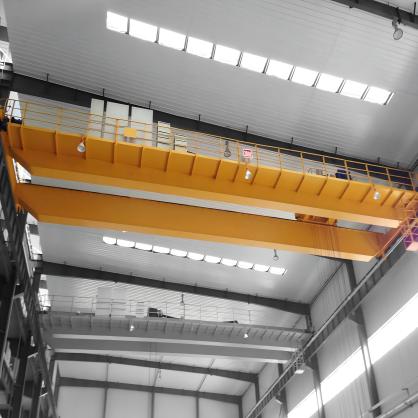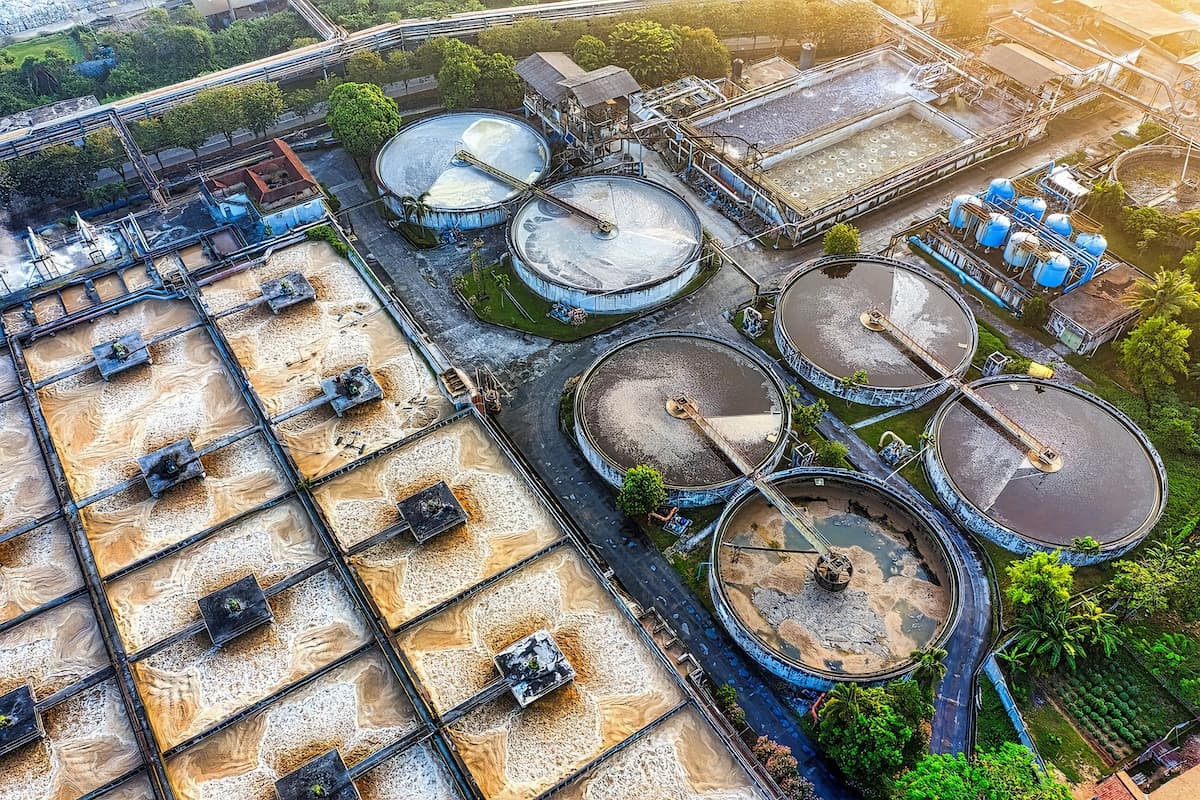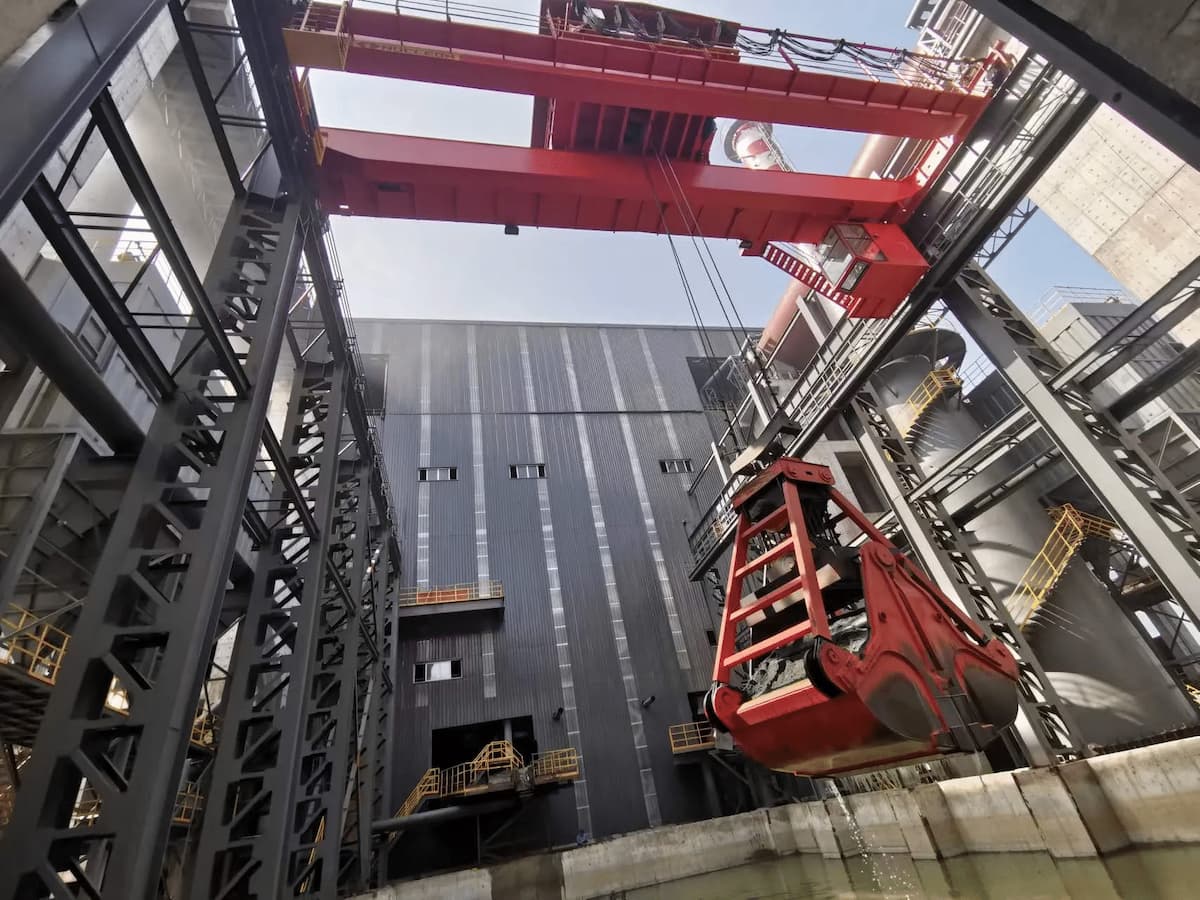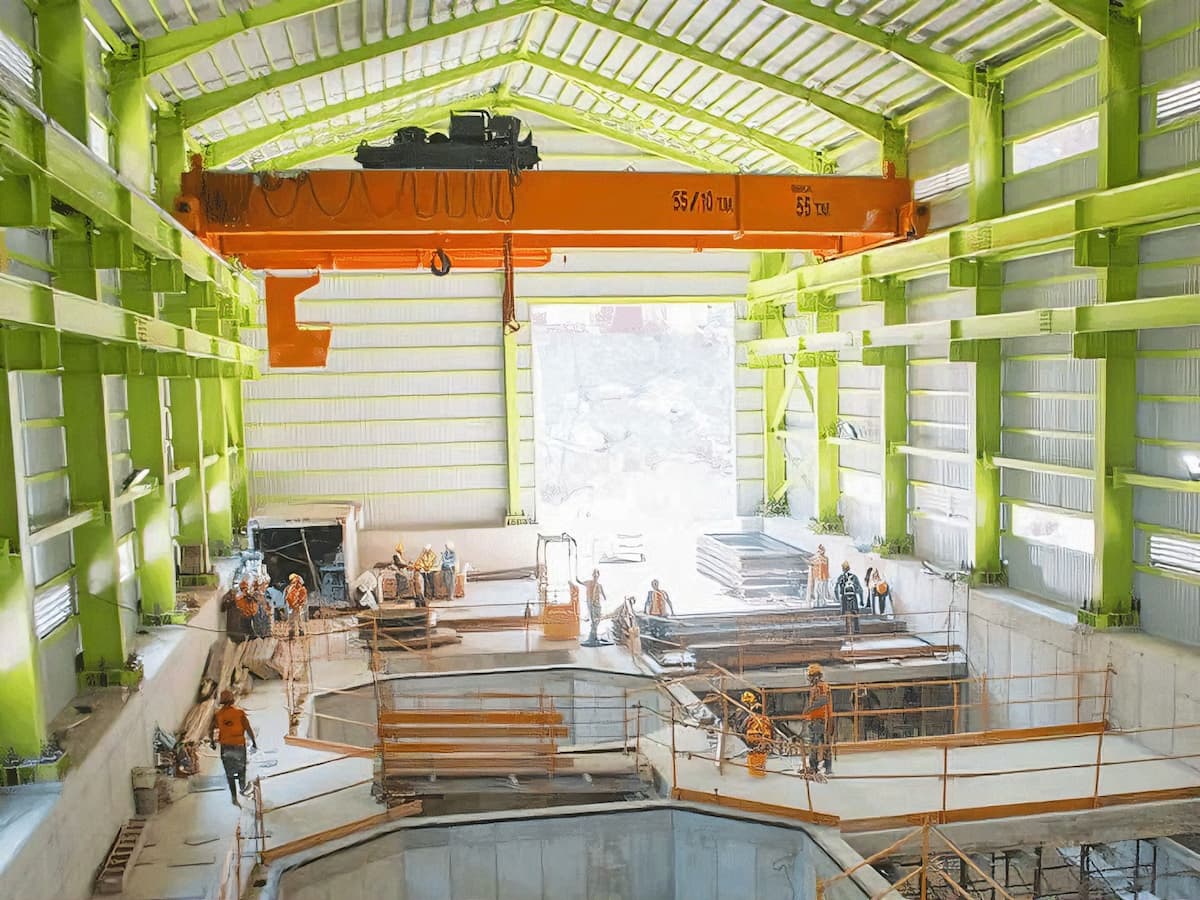Blog
- Home
- Blog
Overhead Crane Selection Guide for Wastewater Treatment Plants: Structure, Performance, and Safety
As a key part of urban infrastructure, wastewater treatment plants contain various heavy devices such as bar screens, aeration systems, pumps, mixers, and clarifier mechanisms.These units are often large, heavy, and operate in humid and corrosive environments, creating high demands for lifting and maintenance.In this context, overhead cranes—known for efficiency, safety, and customization—are ideal for equipment installation and repair.Whether for pump installation, equipment replacement, or precise positioning, cranes ensure smooth, reliable handling in limited spaces, enhancing both efficiency and safety.
Main Applications of Overhead Cranes in Wastewater Plants
Overhead cranes perform essential lifting, installation, and maintenance tasks that ensure system stability throughout all treatment stages—from primary to advanced purification.
Core Lifting and Maintenance Equipment
In aeration tanks, pump stations, and screening areas, cranes handle aerators, bar screens, submersible pumps, mixers, and large valves or pipe assemblies.These components are often located over tanks or pits with restricted lifting space, requiring precise control.Overhead cranes provide smooth, accurate hoisting and movement, greatly improving installation and replacement efficiency.
Positioning Accuracy and Anti-Corrosion Requirements
Because wastewater environments involve high humidity, chlorides, and corrosive gases, cranes must offer excellent corrosion resistance.Typical designs feature anti-corrosion coatings, stainless-steel parts, waterproof motors, and sealed control systems.For precision lifting, variable-frequency drives enable millimeter-level positioning and soft start-stop performance.
Typical Application Scenarios
|
Application Area |
Main Equipment |
Typical Operation |
Recommended Crane Type |
Design Features |
| Sludge Treatment Workshop | Dehydrators, sludge pumps, storage tanks | Lifting and installing large sludge units | Single or double-girder overhead crane | Smooth lifting, strong load capacity, humidity-resistant |
| Pump Room | Large pumps, valves, piping systems | Inspection, replacement, and installation | Double-girder or explosion-proof crane | High precision, anti-corrosion, explosion-proof design |
| Maintenance Area | Spare parts, electromechanical assemblies | Daily lifting and assembly work | Single-girder overhead crane | Lightweight, flexible, easy to maintain |
Types and Selection Criteria for Overhead Cranes in Wastewater Treatment Plants
Wastewater treatment plants feature complex processes and densely distributed equipment.Different areas require specific crane structures and performance characteristics.During selection, factors such as workspace, lifting capacity, environment, and maintenance convenience must be evaluated.These considerations ensure both operational safety and economic efficiency.
Single-Girder vs. Double-Girder Overhead Cranes
|
Type |
Technical Features |
Typical Application |
Design and Performance Characteristics |
| Lightweight, compact, low cost for manufacturing and maintenance.Ideal for maintenance rooms, electrical rooms, and sludge dewatering areas. | Suitable for 1–20 t light and medium loads.For moderate precision and low-frequency lifting. | Flexible operation, simple control.Efficient for compact working spaces. | |
| High load capacity, strong rigidity, stable operation.Allows larger spans and lifting heights. | Suitable for pump rooms and sludge treatment workshops.Used in large equipment installation zones. | Supports heavy-duty and continuous lifting.Can include multi-hoist and precision control systems. |
Main Beam Span, Lifting Height, and Runway Design
The span and lifting height must match basin width, equipment layout, and pipeline arrangement.Insufficient span limits operation range; excessive span increases structural cost.Lifting height must prevent interference with beams, pipes, or ceilings during top-level hoisting.Runways often use rust-proof rails or anti-corrosion coatings for long-term stability.They are precisely aligned with building structures to ensure smooth, low-noise operation and easy maintenance.
Explosion-Proof, Anti-Corrosion, and Moisture-Resistant Designs
Wastewater plants contain humidity, corrosive gases, and potential flammable atmospheres.Thus, cranes require multiple protective designs.Anti-corrosion features include hot-dip galvanized or epoxy-coated surfaces, stainless fasteners, and sealed control boxes.Explosion-proof components prevent sparks and ensure safe operation.Moisture protection uses sealed enclosures, ventilation, and anti-condensation systems to maintain stable performance.
Performance and Safety Analysis of Overhead Cranes
In wastewater environments, overhead cranes must lift and maintain key equipment under humidity, corrosion, and spatial constraints.Their performance and safety design directly affect system reliability and efficiency.
Operational Stability and Control System Safety
Stable operation ensures safe lifting performance.Modern cranes use variable-frequency drives and soft-start technology to reduce shocks and vibrations.Control systems integrate redundant protection and self-diagnostic functions for safe power and signal management.Some advanced models feature wireless control and anti-sway systems for higher precision and operator safety.
Limiters, Buffers, and Anti-Fall Protection
To prevent collisions at travel ends or lifting limits, cranes use multi-level limit switches.These devices monitor motion and cut power automatically when limits are reached.Buffer systems absorb impact energy and reduce structural stress.Hooks and wire ropes include anti-slip and locking mechanisms to prevent load dropping during emergencies.
Intelligent Monitoring and Remote Maintenance
With the rise of Industrial IoT, cranes are becoming increasingly intelligent.Data systems monitor load, cycles, temperature, and vibration in real time.This enables fault prediction and service-life assessment.Remote maintenance modules allow online diagnostics, minimizing downtime and improving reliability.Cloud-based data analysis helps optimize maintenance schedules and operational planning, enhancing both safety and efficiency.
HSCRANE Overhead Crane Solutions for Wastewater Treatment Plants
In the wastewater treatment industry, lifting equipment must operate reliably under high-frequency use and harsh conditions.Systems face long-term exposure to humidity, heat, and corrosive environments.With extensive engineering experience and a mature technical system, HSCRANE provides integrated overhead crane solutions for wastewater treatment plants worldwide.Our services cover design, manufacturing, installation, and full life-cycle support.
Customized Overhead Crane Design for Wastewater Applications
HSCRANE offers tailored overhead crane solutions based on plant layout, lifting capacity, and working space.Options include single-girder, double-girder, explosion-proof, and anti-corrosion models.Main girders use high-strength low-alloy steel with anti-corrosion coatings or hot-dip galvanization for durability and rigidity.All electrical components feature moisture-proof, dust-proof, and explosion-proof protection to withstand humid and hot environments.Control systems support variable frequency drives, precision positioning, and wireless operation.These features ensure smooth motion, improved operator safety, and high lifting accuracy.
Installation, Commissioning, and Long-Term Maintenance
- Installation and Commissioning: HSCRANE not only supplies equipment but also delivers full installation, testing, and maintenance services.Our professional team completes on-site rail alignment, structural assembly, and electrical commissioning to meet FEM and ISO standards.
- Long-Term Maintenance: Through our digital maintenance platform, HSCRANE monitors equipment data in real time.We provide preventive maintenance alerts and spare part replacement reminders.This approach extends service life and reduces downtime.For overseas clients, HSCRANE offers remote technical support and periodic inspection services to maintain long-term reliability.
Successful Project Example
In a wastewater plant expansion project in the Middle East, HSCRANE delivered and installed two 20-ton grab-type double-girder overhead cranes.They are used for lifting and cleaning solid-liquid mixtures in sludge pits.
The cranes feature corrosion-resistant steel structures and stainless-steel grab systems.Dual frequency drives ensure smooth start and stop with precise load positioning.The control system is explosion-proof and moisture-protected, suitable for high-humidity, high-temperature environments.After commissioning, system stability increased significantly, and manual cleaning was reduced by 60%.This improvement enhanced sludge-handling efficiency and operational safety.The project demonstrates HSCRANE’s strong engineering capability and customization expertise in the environmental and water treatment sectors.
In wastewater treatment facilities, safety and efficiency are always the top priorities.
As critical lifting and maintenance equipment, overhead cranes directly affect plant safety and productivity.Reliable design, stable operation, and robust protection systems ensure long-term performance and reduced maintenance.Proper selection and professional maintenance extend crane lifespan and optimize operational efficiency.Through scientific selection and professional maintenance, not only can equipment lifespan be extended, but a solid foundation is also established for the long-term stable operation of environmental protection facilities.HSCRANE remains committed to providing safe, efficient, and intelligent overhead crane solutions for global water treatment and environmental projects.
Contact us today for a customized overhead crane design and installation plan tailored to wastewater plant conditions.Let HSCRANE help make your project safer, smarter, and more efficient.
If you want to learn more about selecting the right crane for different applications, visit:
Bridge Crane Selection Guide: How to Pick the Best Crane for Your Workshop
Recent Post









